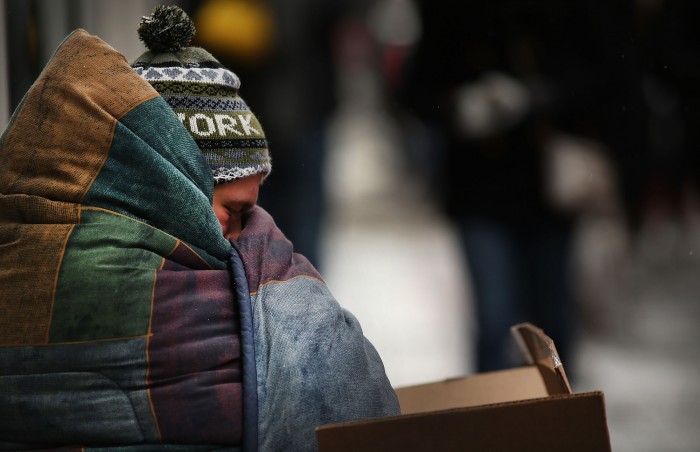New York City Has a Bold Plan to Fight Homelessness with Data

Homelessness in New York City has reached the highest levels seen since the Great Depression in the 1930s. This time around, the city is hoping to use data to help solve the problem.
Wired reports that the mayor’s office is adopting a new tool called StreetSmart so that it can do a better job of using the data it collects about homeless people. The idea: make it easier for outreach workers to keep track of the people they work with as they move around the city, and allow the administration to identify bigger trends that will allow it to make better-educated interventions to deal with the problem.
It’s difficult to overstate how little cross-communication there is between civic agencies that serve the homeless. The same information is often collected by multiple groups for different purposes because there’s no way of knowing what someone else has already recorded. And even then, aging systems often make it difficult to do much with that data—even visualizing it on maps can be a challenge. Wired says that's the case with New York City's homelessness data, too.
The new StreetSmart system will allow appropriately authorized workers of city agencies and nonprofit groups to upload and study data about homeless people across the entire city—from the way they use shelters, to their medical and work histories. So, as a hypothetical example, if someone showed up at a shelter one night and their record shows they’d just been discharged from the hospital, workers might know that the person may be particularly vulnerable.
The goal of the system is to allow the city to make better use of its resources by guiding its interventions to ensure they have maximum impact. At first that might be working out how to make most efficient use of shelters, but ultimately it could tie in with, say, social housing projects to optimize the flow of people into affordable accommodation.
New York City is well-known for its innovative approaches to solving city issues. A 2015 analysis by the UK research foundation Nesta, consultancy firm Accenture, and nonprofit innovation center Future Cities Catapult (full disclosure: I used to work there) found that the city’s leadership was the strongest in the world for fostering innovation, technology adoption, and entrepreneurship.
That said, it doesn’t always go well. Last year, NYC's authorities curtailed a program to make Wi-Fi available to anyone who walks its streets when people started abusing the service. StreetSmart may have some teething problems of its own: it’s notoriously difficult to implement new technology solutions like these that cut across multiple city departments. But if anywhere can do it, it’s probably Gotham.
(Read more: Wired, “Humans Do Dumb Things with Smart Cities”)
Keep Reading
Most Popular
Large language models can do jaw-dropping things. But nobody knows exactly why.
And that's a problem. Figuring it out is one of the biggest scientific puzzles of our time and a crucial step towards controlling more powerful future models.
The problem with plug-in hybrids? Their drivers.
Plug-in hybrids are often sold as a transition to EVs, but new data from Europe shows we’re still underestimating the emissions they produce.
Google DeepMind’s new generative model makes Super Mario–like games from scratch
Genie learns how to control games by watching hours and hours of video. It could help train next-gen robots too.
How scientists traced a mysterious covid case back to six toilets
When wastewater surveillance turns into a hunt for a single infected individual, the ethics get tricky.
Stay connected
Get the latest updates from
MIT Technology Review
Discover special offers, top stories, upcoming events, and more.